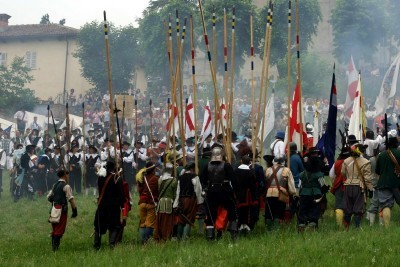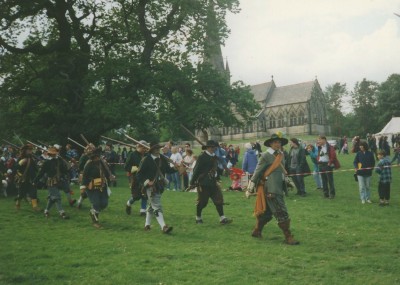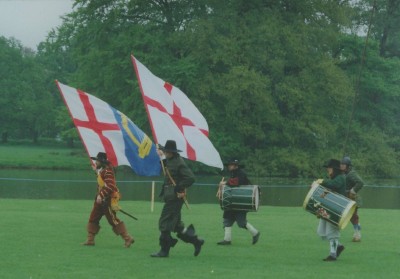At the core of a Regiment of Foote lie two interdependent skills: those of the pikeman and musketeer.
The pike is a 16' (4.8m) long ash pole tipped with steel and is essentially a defensive measure. Together in a 'block' the pike provide a powerful disincentive to charging cavalry and give the muskets time to reload. "To trail a pike" was an honourable service in the seventeenth century and the 'block' has a strong sense of camaraderie - and still does today.


The heart of a regiment is its colour, a large silk flag on a hand-held pole. Carried by the most junior officer, it was considered a great humiliation in battle to lose the colour to the enemy. Every soldier was taught to recognise it as his rallying point, and today, as then, it is flourished proudly at the head of the troops.
Behind the ensign marches the drummer, and even now, the sound of the drum as the regiment marches through a town will be sure to bring people flocking to their doors and windows.
Sergeants and officers of musket and pike are recognisable by their sparkish clothes and polearms to denote rank.
Last but certainly not least every regiment has its commander and ours is Stefan Kaminski, a young man who grew up in the regiment with a special care for our prized gun, Boston - see the Artillery page!
